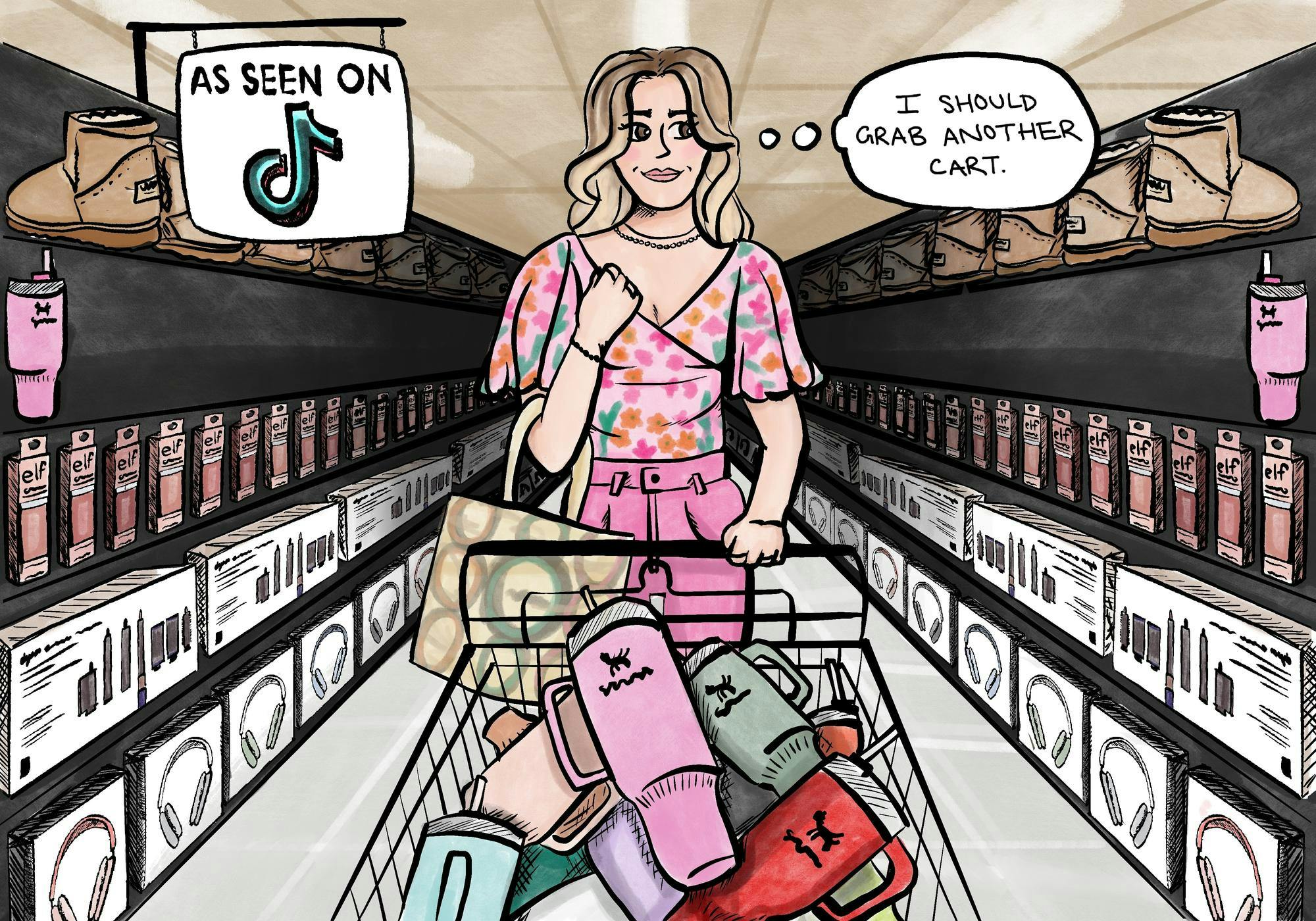With so many trends constantly circulating on TikTok — an app with over 1.1 billion users — social media has launched a plethora of digital goods into the limelight. Products like the Stanley Cup, UGG Tasman slipper and Dyson AirWrap have each garnered millions in profits as a direct result of viral content and influencers.
But how exactly do these items become so popular in the first place?
Marketing Assistant Professor Anita Pansari said items become trendy because of the people who are actually purchasing, using and making videos with them.
"I think the items become trendy because of the influencer who’s actually marketing them," Pansari said. "The appeal is who’s promoting the product."
Creative advertising freshman Alyssa Malyuk believes people are influenced to buy items seen on social media because of the influencing nature of these apps in general.
"I don’t even know if it would be the design, shape or color," Malyuk said. "I really just think it’s the influence, it’s why these things become so popular, so fast."
Pansari said companies use a multitude of factors to successfully market their products to different audiences.
"Authenticity (is) one," she said. "Second, a huge range of audience – like who can use that product. Stanley cups can be used by everybody. So if you can target those different target groups, that would be something."
Something as simple as being able to see these products in stores and in person is important, Pansari said, as customers can recognize these items posted on social media and feel more inclined to buy them.
"If the product is available in the stores, then consumers will see it and then there will be a brand recall," she said.
Malyuk said she bought some of these products herself due to seeing them around so frequently.
"I think seeing a lot of people, especially with the Uggs and the Stanley cups, just look cute (makes me think) 'oh, I want that', so I just ended up buying them for myself," Malyuk said.
Finance sophomore Erik Smoot said social media is also one of the many ways people become aware of these products, which often leads to their purchase.
"I think it (social media) accentuates it," Smoot said. "Everyone’s on social media (so) they’re always seeing ads and I think that really pushes people to buy more."
Smoot said social media’s use of advertisements and showing other people sporting these products influence users to make purchases that they wouldn’t normally have known about. Once a trend is set, he said, everyone will want to indulge in it.
"It’s not necessarily the item itself, it’s how many people have that item," Smoot said.
However, once an item becomes popular through social media, it can go "overboard" as people purchase the same thing multiple times.
One of the most popular items seen on TikTok is the Stanley cup, a reusable water bottle that comes in different sizes, shapes and colors. Despite being created in 1913, the cups only shot to fame within the last two years thanks to TikTok.
"Stanley cups have been around for way before you were born, and they were used by men," Pansari said. "One of the influencers picked it up, realized how great it is, and the company realized that now they can make it for women."
However, Pansari said, purchasing multiple copies of the Stanley cups, or overconsuming, contradicts the purpose of these water bottles.
Support student media!
Please consider donating to The State News and help fund the future of journalism.
"Nobody needs 3 Stanley cups," she said. "You just need one because that’s the whole idea of Stanley cups: that it’s supposed to last a lifetime and it’s supposed to be one of the most sustainable products."
Similarly, Smoot thinks owning multiple copies of a product isn’t necessary.
"I don’t think you really need 12 cups," he said. "But, you know, people can do what they want."
Discussion
Share and discuss “'Nobody needs three Stanley cups': Students talk overconsumption, media trends” on social media.


